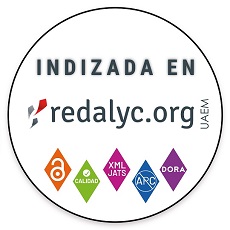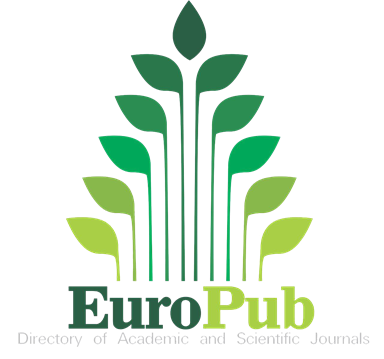High dilution preparations for organic production system of broccoli
Preparados en altas diluciones en el manejo de brócoli bajo sistema de producción orgánica
DOI:
https://doi.org/10.15446/agron.colomb.v35n1.58586Keywords:
Brassica oleraceae var. italica, agroecology, agrohomeopathy, seedling production, sustainable agriculture (en)Brassica oleraceae var. italica, agroecología, agrohomeopatía, producción de plántulas, agricultura sustentable (es)
Downloads
The aim of this study was to evaluate the influence of high dilution preparations on seedlings growth and production of broccoli under organic system. Three experiments were conducted in a greenhouse with completely randomized design. Two others experiments were conducted under field conditions, and the experimental design was randomized in blocks. Both designs were done with four replications and nine treatments. The treatments consisted of high dilution preparations of Arnica montana, Silicea terra, Carbo vegetabilis and Sulphur at 6CH or 30CH, water was used as control. In greenhouse, plant height, root length and stem diameter of seedlings were evaluated, along with the fresh and dry mass of shoot and root. In field, fresh and dry mass of inflorescences, plant heigh and stem diameter were evaluated. Silicea terra at 30CH increased the stem diameter, root length and dry mass of shoot and root in the broccoli seedlings. Sulphur at 6CH increased the fresh and dry mass of broccoli inflorescences. Silicea terra at 6CH, Carbo vegetabilis, and Sulphur at 30CH increased the plant height in field experiments. This suggests that high dilution preparations can be utilized to increase the biomass production and others desirable characteristics of broccoli crop under organic system.
References
Andrade, F., V. Casali, and P. Cecon. 2012. Effect of dynamizations of Arnica montana in metabolism of chambá (Justiciapectoralis Jacq.)]. Rev. Bras. Plantas Medicinales 14, 159-162. Doi: 10.1590/s1516-05722012000500006.
Almeida, M. 2002. Basil (Ocimum basilicum L.) response to homeopathic treatments. MSc thesis. Universidade Federal de Vinosa, Vinosa, Brazil.
Altieri, M. 2002. Agroecology: the science of natural resource management for poor farmers in marginal environments. Agric. Ecosyst. Environ. 93, 1-24. Doi: 10.1016/s0167-8809(02)00085-3.
Baenas, N., D. Moreno, and C. García-Viguera. 2012. Selecting sprouts of brassicaceae for optimum phytochemical composition. J. Agric. Food Chem. 60, 11409-11420. Doi: 10.1021/jf302863c.
Betti, L., G. Trebbi, V. Majewsky, C. Scherr, D. Shah-Rossi, T. Jaeger, and S. Baumgartner. 2009. Use of homeopathic preparations in phytopathological models and in field trials: a critical review. Homeopathy 98, 244-266. Doi: 10.1016/j.homp.2009.09.008.
Bonato, C., G. Proença, and B. Reis. 2009. Homeopathic drugs Arsenicum album and Sulphur affect the growth and essential oil content in mint (Mentha arvensis L.). Acta Scient. Agron. 31, 101-105. Doi: 10.4025/actasciagron.v31i1.6642.
Bonato, C. and E. Silva. 2003. Effect of the homeopathic solution Sulphur on the growth and productivity of radish. Acta Scient. Agron. 25, 259-263.
Bonfim, F., E. Martins, R. Das-Dores, R. Barbosa, V. Casali, and I. Honório. 2008. Use of homeopathic Arnica montana for the issuance of roots of Rosmarinus officinalis L. and Lippia alba (Mill) N.E.BR. Int. J. High Dilution Res. 7, 113-117.
Boff, P. 2013. Building homeopathy into agro-ecology science. pp. 1-4. In: II International Conference on Homeopathy in Agriculture. Maringá, Brazil.
Davis, A. and D. Jacobs. 2005. Quantifying root system quality of nursery seedlings and relationship to outplanting performance. New For. 30, 295-311. Doi: 10.1007/s11056-005-7480-y.
Embrapa. 2013. Sistema brasileiro de classificação de solos. Embrapa Solos, Brasília, Brazil.
Farmacopeia Homeopática Brasileira. 2011. Farmacopeia Homeopática Brasileira. 3rd ed. São Paulo, Brazil.
Grisa, S., M. Toledo, L. Oliveira, L. Holz, and D. Marine. 2007. Growth and productivity of lettuce under different powers of the homeopathy medicine Arnica montana. Rev. Bras. Agroecol. 2, 1050-1053.
Jahangir, M., H. Kim, Y. Choi, and R. Verpoorte. 2009. Health-affecting compounds in Brassicaceae. Compr. Rev. Food Sci. Food Saf. 8, 31-43. Doi: 10.1111/j.1541-4337.2008.00065.x.
Jaramillo, N. and D. Diaz. 2006. Generalidades del cultivo. pp. 9-55. In: Jaramillo, N. and D. Diaz (eds.). El cultivo de las cruciferas. Corpoica, Rionegro, Colombia.
Krasowski, M. and J. Owens. 2000. Morphological and physiological attributes of root systems and seedling growth in three different Picea glauca reforestation stock. Can. J. For. Res. 30, 1669-1681. Doi: 10.1139/x00-093.
Keck, A. and J. Finley. 2004. Cruciferous vegetables: cancer protective mechanisms of glucosinolate hydrolysis products and selenium. Integr. Cancer Ther. 3, 5-12. Doi: 10.1177/1534735403261831.
Pulido, E., P. Boff, T. Duarte, and M. Boff. 2014. Homeopathic preparations for growth and yield of cabbage in organic system. Horticultura Brasileira. 32, 267-272. Doi: 10.1590/S0102-05362014000300005.
R Core Team. 2014. R: A language and environment for statistical computing. Version 3.3.0. R Foundation for Statistical Computing. Vienna, Austria.
Rosa, E. and A. Rodrigues. 2001. Total and individual glucosinolate content in 11 broccoli cultivars grown in early and late seasons. HortScience 36, 56-59.
Rossi, F., P. Melo, E. Ambrosano, N. Guirado, and E. Schammass. 2006. Application of the homeophatic preparation Carbo vegetabilis and development of lettuce seedlings. Cultura Homeopatica 17, 14-17.
Toledo, M., J. Stangarlin, and C. Bonato. 2015. Control of early blight and effect on growth variables of tomato plants by using homeopathic drugs. Summa Phytopathol. 41, 126-132. Doi: 10.1590/0100-5405/1944.
Warner, K. 2006. Extending agroecology: Grower participation in partnerships is key to social learning. Renewable Agriculture and Food Systems. 21, 84-94. Doi: 10.1079/RAF2005131.
How to Cite
APA
ACM
ACS
ABNT
Chicago
Harvard
IEEE
MLA
Turabian
Vancouver
Download Citation
CrossRef Cited-by
1. Cassiane Ubessi, Solange Bosio Tedesco, Cristiane de Bona da Silva, Micheli Baldoni, Dionatan Ketzer Krysczun, Berta Maria Heinzmann, Isadora Aguirre Rosa, Natacha Cossettin Mori. (2019). Antiproliferative potential and phenolic compounds of infusions and essential oil of chamomile cultivated with homeopathy. Journal of Ethnopharmacology, 239, p.111907. https://doi.org/10.1016/j.jep.2019.111907.
2. Amanda Do Prado Mattos, Giovanni Dinelli, Ilaria Marotti, Leonardo Felipe Faedo, Mari Inês Carissimi Boff, Pedro Boff. (2025). Effects of dynamised high dilutions and vegetal extract based on silicon on the growth and induction of resistance in tomato plants against Rhizoctonia solani . Biological Agriculture & Horticulture, 41(1), p.13. https://doi.org/10.1080/01448765.2024.2413579.
3. Francesco Di Lorenzo, Giovanni Dinelli. (2023). Systemische agrohomöopathische Intervention auf der Grundlage der metabolischen Ähnlichkeit lebender Organismen. Allgemeine Homöopathische Zeitung, 268(05), p.11. https://doi.org/10.1055/a-2092-8307.
4. Amanda do Prado Mattos, Juliano Muniz da Silva dos Santos, Egabrieli Garbin, Mari Ines Carissimi Boff, Pedro Boff. (2024). Development and gas exchange of fig plants submitted to dynamized high dilutions. Semina: Ciências Agrárias, 45(6), p.1997. https://doi.org/10.5433/1679-0359.2024v45n6p1997.
5. Leonardo Faedo, Caroline Matias, Rovier Verdi, Julia Wright, Francis Rayns, Aike Kretzschmar, Pedro Boff. (2024). The use of mineral dynamised high dilutions for natural plant biostimulation; effects on plant growth, crop production, fruit quality, pest and disease incidence in agroecological strawberry cultivation. Biological Agriculture & Horticulture, 40(4), p.267. https://doi.org/10.1080/01448765.2024.2396894.
Dimensions
PlumX
Article abstract page views
Downloads
License
Copyright (c) 2017 Agronomía Colombiana

This work is licensed under a Creative Commons Attribution-NonCommercial-ShareAlike 4.0 International License.
© Centro Editorial de la Facultad de Ciencias Agrarias, Universidad Nacional de Colombia
Reproduction and quotation of material appearing in the journal is authorized provided the following are explicitly indicated: journal name, author(s) name, year, volume, issue and pages of the source. The ideas and observations recorded by the authors are their own and do not necessarily represent the views and policies of the Universidad Nacional de Colombia. Mention of products or commercial firms in the journal does not constitute a recommendation or endorsement on the part of the Universidad Nacional de Colombia; furthermore, the use of such products should comply with the product label recommendations.
The Creative Commons license used by Agronomia Colombiana journal is: Attribution - NonCommercial - ShareAlike (by-nc-sa)

Agronomia Colombiana by Centro Editorial of Facultad de Ciencias Agrarias, Universidad Nacional de Colombia is licensed under a Creative Commons Reconocimiento-NoComercial-CompartirIgual 4.0 Internacional License.
Creado a partir de la obra en http://revistas.unal.edu.co/index.php/agrocol/.





















